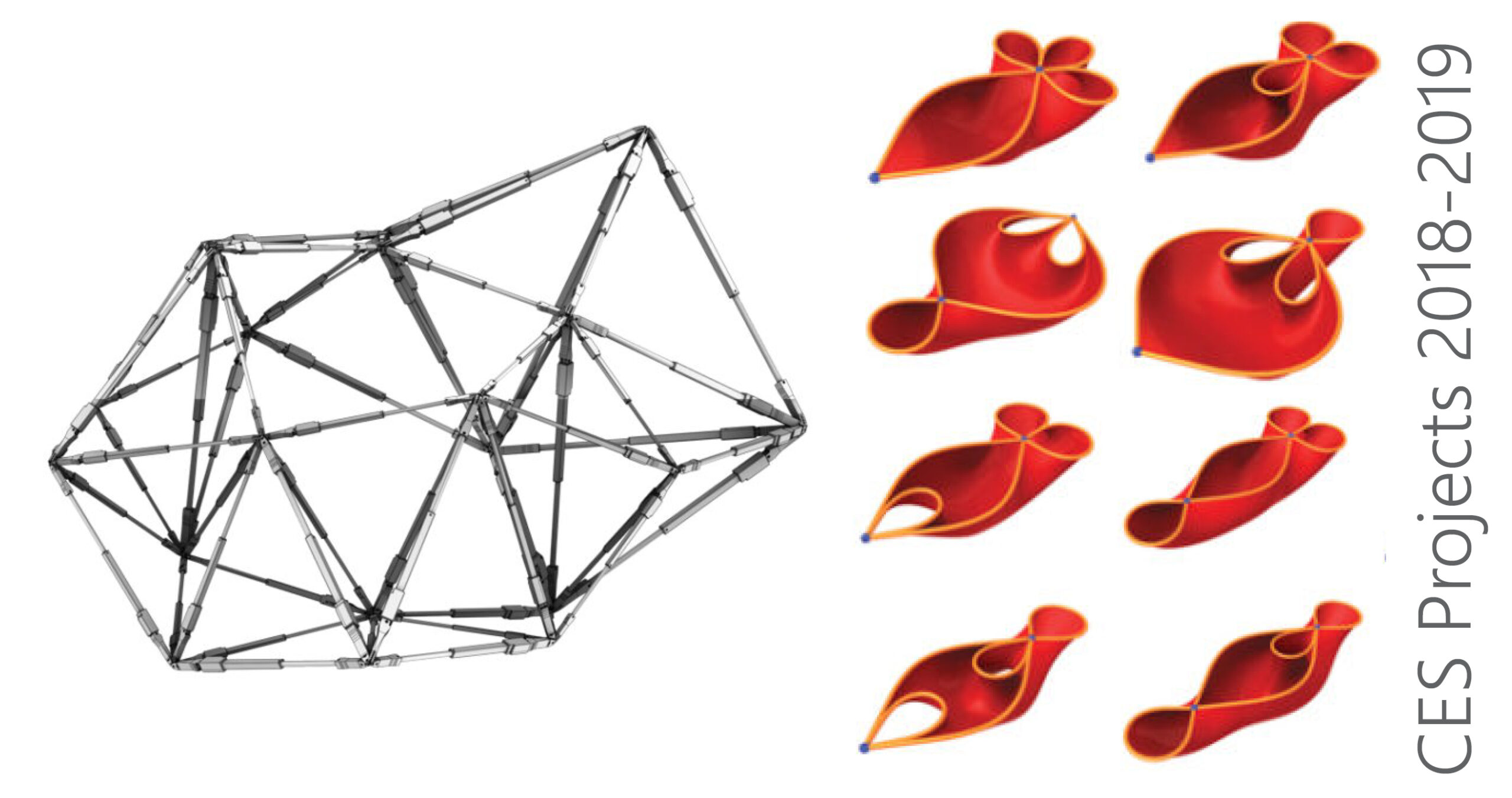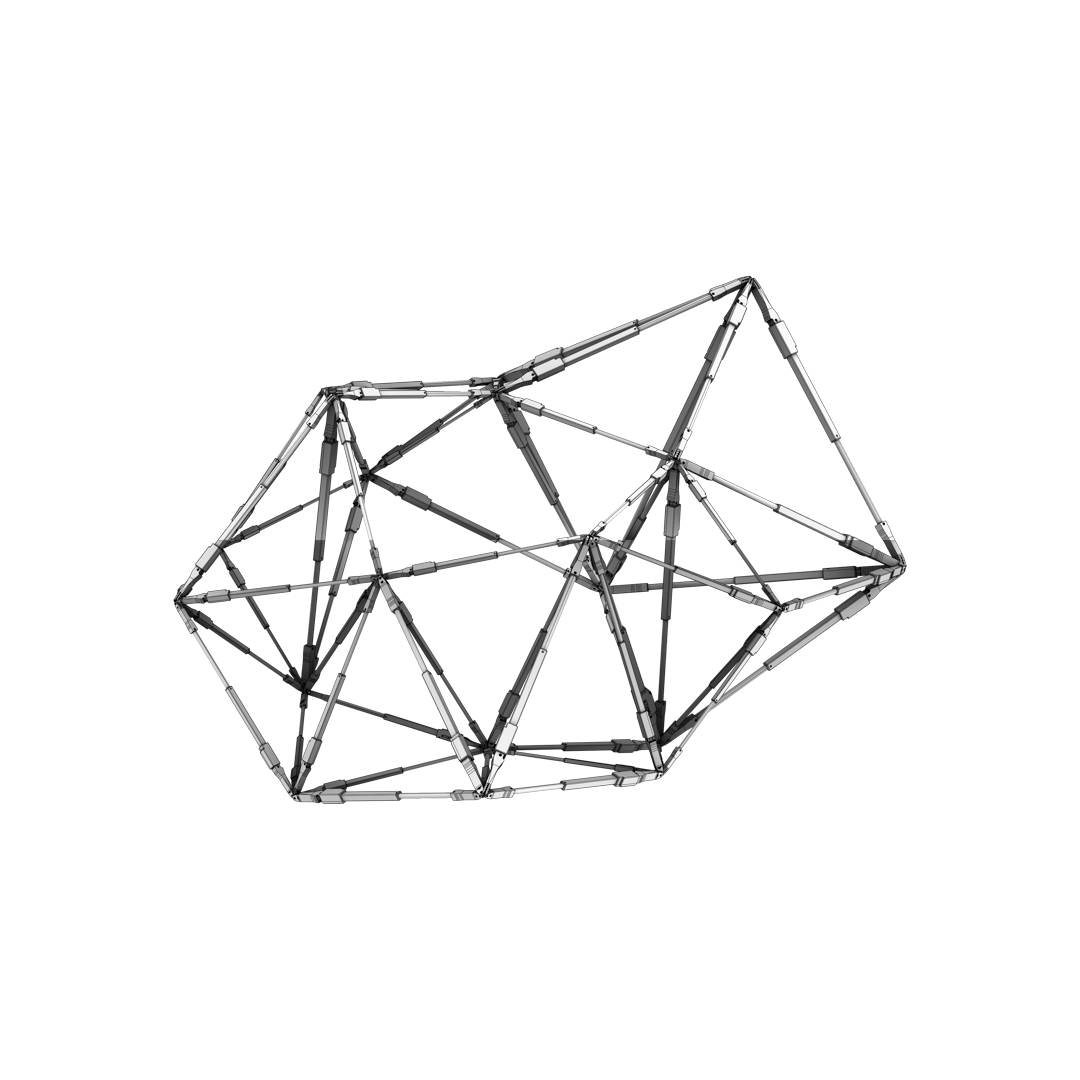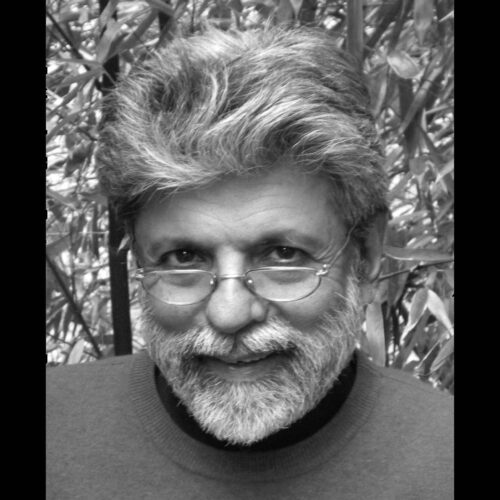CES Projects 2018-19

ACTUATED STRUCTURES
Our ongoing studies of morphing structures using linear actuators continues the use of software and electronics developed during the Amoeboid Sphere project to new morphologies such as the amoeboid torus, linear tetrahedral structures and others. Details of a low resolution ring and a linear prototype is shown.

[Credits]:
Principals: Che Wei Wang, Haresh Lalvani
CES Researcher: David Franck
Student Research Assistant: Abhishek Thakkar
SINGULARITY STRUCTURES
We continue our work on structures with a “singularity” where vertices coalesce towards the limit case of structures with one vertex. Eight examples of “pentagons with 2 vertices” are shown (top left) along with architectonic studies of two (bottom left). These provide a model case to index component parts in a systematic manner. A 5D coordinate system is presented for case with the planar version and its corresponding curved state. The higher-dimensional indexing has natural advantages in software-driven fabrication and robotic construction and assembly.

[Credits]:
Principals: Haresh Lalvani, John Gulliford
CES Researcher: Robinson Strong
Student Research Assistant: Naini Bansa
